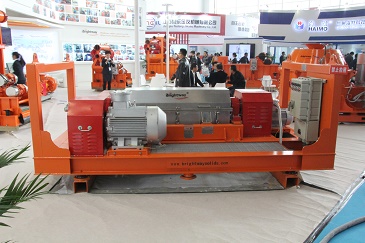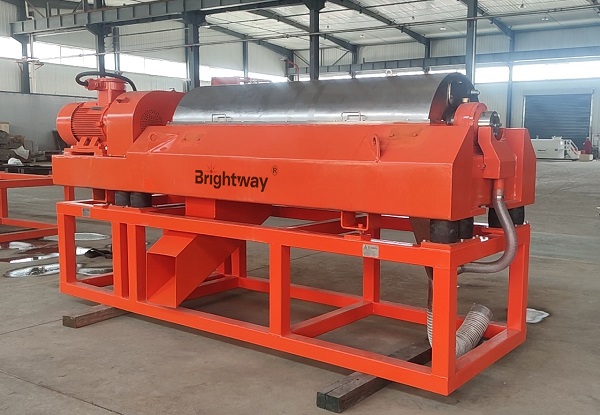For oil field and industrial services, especially in environmentally sensitive areas, decanter centrifuge, also known as decanting centrifuges, are particularly effective in drilling waste treatment, with high recovery rates and significantly reduced mud treatment and disposal costs.

When choosing the type of centrifuge, the appropriate centrifuge should be selected according to the use occasion, material properties and other factors to achieve the expected purpose. The following three points are the factors that must be considered when purchasing:
Anti-corrosion performance: The materials separated by centrifuges are generally corrosive to a certain extent, and the materials of the parts in contact with the materials must be able to meet the requirements of corrosion resistance to ensure safe use.
The material types of structural parts, and the material of filter cloth, etc. should be selected when selecting. The manufacturer can be informed of the properties of the material during model selection, so that the manufacturer can make suggestions for the selection of centrifuge materials according to the characteristics of the separated medium, and indicate it in the order to ensure that anticorrosion requirements for centrifuges.
Explosion-proof performance: If the materials handled by the centrifuge contain flammable and explosive substances such as organic solvents, the centrifuge should have explosion-proof performance. The explosion-proof performance depends on the explosion-proof requirements of the process. The explosion-proof occasions involved in the past only proposed to configure explosion-proof motors. In the past two years, most of the occasions where the processed materials contain solvents and other organic solvents have proposed nitrogen protection requirements. In fact, Brightway mechanical centrifuges have achieved explosion-proofing in the true sense, and various measures must be taken in terms of machinery, electronic control, and accessory configuration, such as:
Electric control system: explosion-proof isolation barrier, non-contact energy consumption braking system, electrostatic grounding, explosion-proof automatic control.
Mechanical system: explosion-proof motor, explosion-proof lighting, anti-collision measures, anti-static transmission belt.
Explosion-proof accessories: nitrogen protection device, nitrogen online detection, on-site explosion-proof control button.
Therefore, for the occasions with explosion-proof requirements, the user should specify the separated medium, explosion-proof requirements and grades when ordering, configure the corresponding devices and take appropriate measures to meet the explosion-proof requirements.

Separation performance: Separation performance is the most basic function of a centrifuge, including separation effect, washing effect, processing capacity, degree of automation, etc. When ordering and selecting models, it is difficult to accurately determine the final separation effect due to the differences in material properties, including the viscosity, particle size and distribution, density, and solid-liquid ratio of the material.
For some materials, the filter cake needs to be washed with washing liquid, and some even need to be washed many times to meet the requirements, which requires the configuration of washing pipes. The washing effect has a great influence on the washing time, the washing speed, and the structure of the washing tube.
The processing capacity of the centrifuge is related to the physical and chemical properties of the material and the separation requirements. It is generally estimated by the number of cycles in one hour and the weight of the filter cake in a single operation.
In order to improve the separation efficiency of the drilling fluid centrifuge, it is generally necessary to properly dilute the drilling fluid input into the drilling fluid centrifuge with water to reduce the funnel viscosity of the drilling fluid to a range of 34-38 s. The addition rate of the dilution water is 0.38 s. ~0.5 L/s. The rotation speed of the drilling fluid centrifuge also has a great influence on the particle size of the separated particles. For example, a drilling fluid centrifuge with a processing capacity of 21.6m3/h can separate barite to 2m and drill cuttings to 3m for water-based drilling fluid when the working speed is 3250r/min; when the working speed is 2500r /min, the barite can be separated to 6 m, and the drill cuttings can be separated to 9 m. According to Stokes’ law, barite particles can settle simultaneously with low-density solid particles 1.5 times their particle size. When using a drilling fluid centrifuge, care should be taken to select the appropriate rotational speed and processing capacity to achieve the desired effect.

